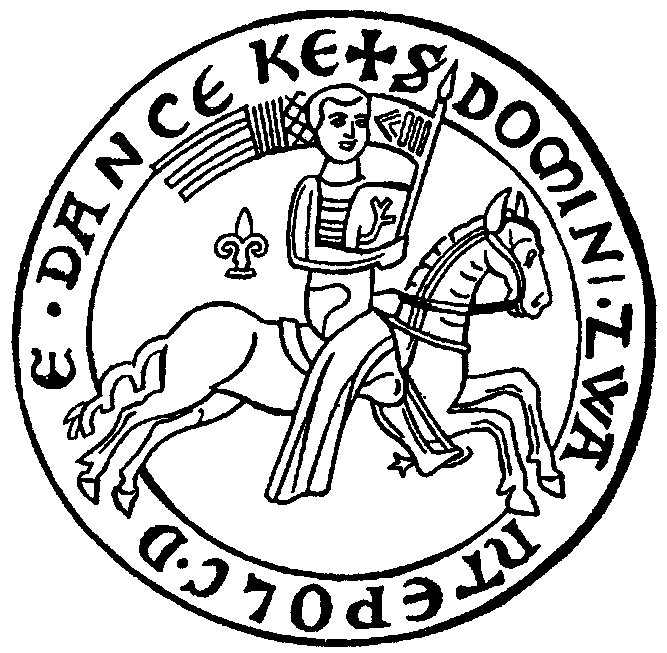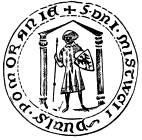|
Teutonic Takeover Of Danzig (Gdańsk)
The city of Danzig (Gdańsk) was captured by the State of the Teutonic Order on 13 November 1308, resulting in a massacre of its inhabitants and marking the beginning of tensions between Poland and the Teutonic Order. Originally the knights moved into the fortress as an ally of Poland against the Margraviate of Brandenburg. However, after disputes over the control of the city between the Order and the King of Poland arose, the knights murdered a number of citizens within the city and took it as their own. Thus the event is also known as Gdańsk massacre or Gdańsk slaughter (''rzeź Gdańska''). Though in the past a matter of debate among historians, a consensus has been established that many people were murdered and a considerable part of the town was destroyed in the context of the takeover. In the aftermath of the takeover, the order seized all of Pomerelia (Gdańsk Pomerania) and bought up the supposed Brandenburgian claims to the region in the Treaty of Soldin (1309). The ... [...More Info...] [...Related Items...] OR: [Wikipedia] [Google] [Baidu] |
Second Peace Of Thorn (1466)
The Peace of Thorn or Toruń of 1466, also known as the Second Peace of Thorn or Toruń (; ), was a peace treaty signed in the Hanseatic city of Thorn (Toruń) on 19 October 1466 between the Polish king Casimir IV Jagiellon and the Teutonic Knights, which ended the Thirteen Years' War, the longest of the Polish–Teutonic Wars. The treaty was signed in the Artus Court, and afterward a mass was held in the Gothic Franciscan Church of the Assumption of the Blessed Virgin Mary to celebrate the peace treaty. Background The treaty concluded the Thirteen Years' War which had begun in February 1454 with the revolt of the Prussian Confederation, led by the cities of Danzig (Gdańsk), Elbing (Elbląg), Kulm (Chełmno) and Toruń, and the Prussian gentry against the rule of the Teutonic Knights in the Monastic State, in order to join the Kingdom of Poland. Both sides agreed to seek confirmation from Pope Paul II and Holy Roman Emperor Frederick III, but the Polish side stre ... [...More Info...] [...Related Items...] OR: [Wikipedia] [Google] [Baidu] |
Przemysł II
Przemysł II ( also given in English and Latin language, Latin as ''Premyslas'' or ''Premislaus'' or in Polish as '; 14 October 1257 – 8 February 1296) was the Duke of Poznań from 1257–1279, of Greater Poland from 1279 to 1296, of Kraków from 1290 to 1291, and Gdańsk Pomerania (Pomerelia) from 1294 to 1296, and then King of Poland from 1295 until his death. After a long period of Polish high dukes and two nominal kings, he was the first to obtain the hereditary title of king, and thus to return Poland to the rank of kingdom. A member of the Greater Poland branch of the House of Piast as the only son of Duke Przemysł I of Greater Poland, Przemysł I and the Silesian Elisabeth of Wrocław, Princess Elisabeth, he was born posthumously; for this reason he was brought up at the court of his uncle Bolesław the Pious and received his own district to rule, the Duchy of Poznań in 1273. Six years later, after the death of his uncle, he also obtained the Duchy of Kalisz. In the fi ... [...More Info...] [...Related Items...] OR: [Wikipedia] [Google] [Baidu] |
Treaty Of Kępno
A treaty is a formal, legally binding written agreement between sovereign states and/or international organizations that is governed by international law. A treaty may also be known as an international agreement, protocol, covenant, convention, pact, or exchange of letters, among other terms; however, only documents that are legally binding on the parties are considered treaties under international law. Treaties may be bilateral (between two countries) or multilateral (involving more than two countries). Treaties are among the earliest manifestations of international relations; the first known example is a border agreement between the Sumer, Sumerian city-states of Lagash and Umma around 3100 BC. International agreements were used in some form by most major civilizations and became increasingly common and more sophisticated during the Early modern period, early modern era. The early 19th century saw developments in diplomacy, foreign policy, and international law reflected by ... [...More Info...] [...Related Items...] OR: [Wikipedia] [Google] [Baidu] |
Greater Poland
Greater Poland, often known by its Polish name Wielkopolska (; ), is a Polish Polish historical regions, historical region of west-central Poland. Its chief and largest city is Poznań followed by Kalisz, the oldest city in Poland. The boundaries of Greater Poland have varied somewhat throughout history. Since the Late Middle Ages, Wielkopolska proper has been split into the Poznań Voivodeship (14th century to 1793), Poznań and Kalisz Voivodeship (1314–1793), Kalisz Administrative division of the Polish–Lithuanian Commonwealth, voivodeships. In the wider sense, it also encompassed Sieradz Voivodeship (1339–1793), Sieradz, Łęczyca Voivodeship, Łęczyca, Brześć Kujawski Voivodeship, Brześć Kujawski and Inowrocław Voivodeship, Inowrocław voivodeships (the last two known as Kuyavian) which were situated further east, and the Santok, Santok Land, located to the northwest. The region in the proper sense roughly coincides with the present-day Greater Poland Voivodesh ... [...More Info...] [...Related Items...] OR: [Wikipedia] [Google] [Baidu] |
Treaty Of Arnswalde
The Treaty of Arnswalde (''Treaty of Choszczno'') was signed on 1 April 1269 between three Brandenburgian margraves, the Ascanians John II, Otto IV and Conrad, and Duke Mestwin II of Pomerelia (Mściwój II) in Arnswalde (then a fortified place in the Brandenburgian New March, now Choszczno, Poland). With the treaty, Mestwin gave some of his possessions to the margraves, and had them returned as a fief. Excluded from the return was the Białogard (Belgard) area, including Świecie (Schwetz), which remained under direct Brandenburgian rule. In turn the margraves financed the duke, e.g. for the marriage of Mestwin's daughter Catherine with Pribislaw II of Parchim-Richtenberg (part of Mecklenburg). Through this treaty, Brandenburg gained direct access to the Baltic Sea. The signing of the treaty provoked a rebellion by the nobility of the region who were opposed to the Brandenburgians. Likewise, Mestwin's brother Warcisław of Gdańsk (Danzig), and his uncle, Sambor II took the o ... [...More Info...] [...Related Items...] OR: [Wikipedia] [Google] [Baidu] |
Mestwin II, Duke Of Pomerania
Mestwin II ( or ''Mszczuj II'') ( 1220 – December 25, 1294) was a Pomeranian duchies and dukes, Duke of Pomerelia, member of the Samborides dynasty. He ruled Pomerelia as a sole ruler from 1273 to 1294. Early life Mestwin II was the son of Swietopelk II and the Přemyslid dynasty princess Eufrozyna. As a young man, in 1243 he was taken into the Teutonic Order custody as a hostage, part of the ceasefire agreement between his father and the Order, but the Order did not keep their part of this agreement and failed to return Mestwin II who was held by them until 1248 (for some time in the Order castle in Austria) when finally released. Acquiring power Most likely upon returning from Teutonic Order captivity his father made Mestwin II the Duke of Świecie (Schwetz) province circa 1250, and upon his father's death he began his challenge against his younger brother for Gdańsk (Danzig) in 1266, starting the so-called Pomerelian Civil War that lasted until 1273. He fought his younger b ... [...More Info...] [...Related Items...] OR: [Wikipedia] [Google] [Baidu] |
Lübeck City Rights
Lübeck (; or ; Latin: ), officially the Hanseatic City of Lübeck (), is a city in Northern Germany. With around 220,000 inhabitants, it is the second-largest city on the German Baltic coast and the second-largest city in the state of Schleswig-Holstein, after its capital of Kiel. It is the 36th-largest city in Germany. The city lies in the Holsatian part of Schleswig-Holstein, on the mouth of the Trave, which flows into the Bay of Lübeck in the borough of Travemünde, and on the Trave's tributary Wakenitz. The island with the historic old town and the districts north of the Trave are also located in the historical region of Wagria. Lübeck is the southwesternmost city on the Baltic Sea, and the closest point of access to the Baltic from Hamburg. The city lies in the Holsatian dialect area of Low German. The name ''Lübeck'' ultimately stems from the Slavic root ('love-'). Before 819, Polabian Slavs founded a settlement which they called Liubice on the mouth of t ... [...More Info...] [...Related Items...] OR: [Wikipedia] [Google] [Baidu] |




